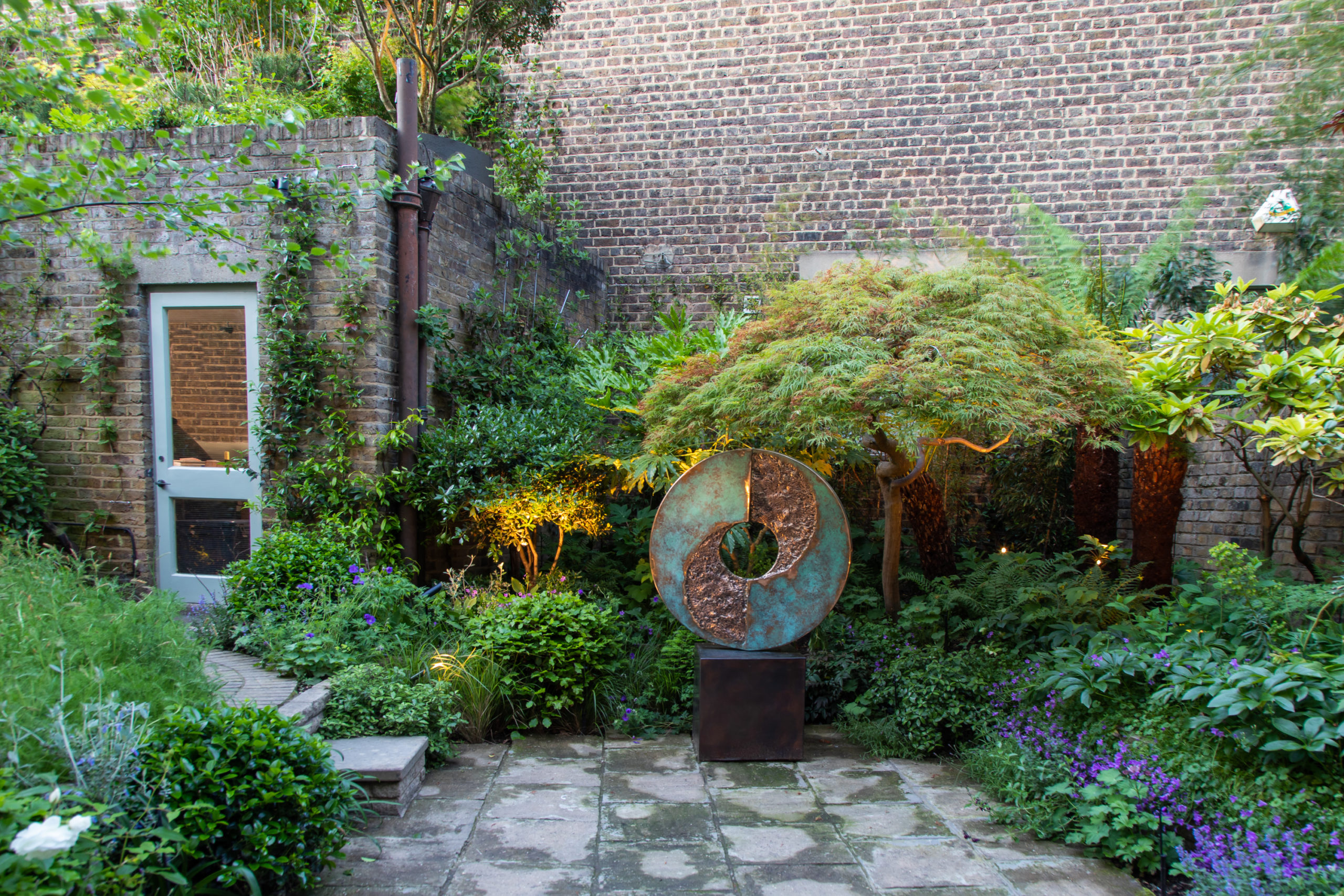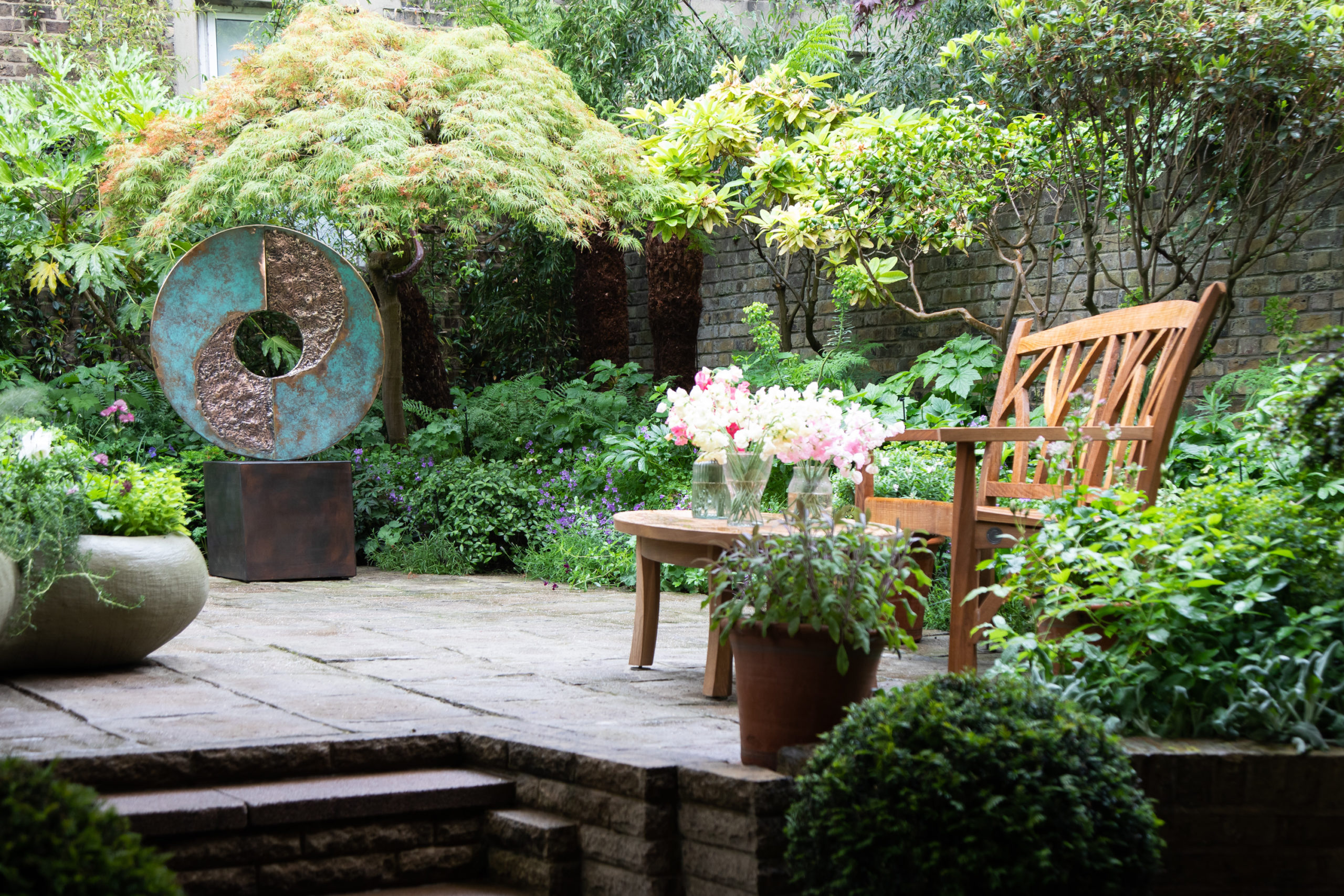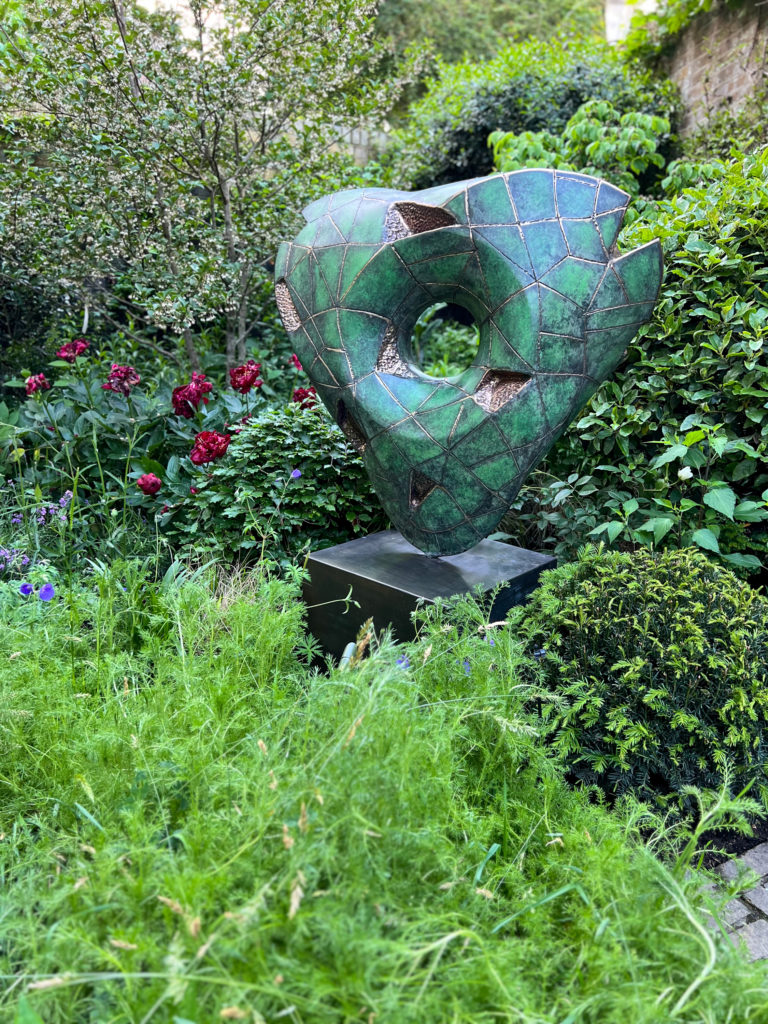
Jack, your sculptures are known for their rich narratives and diverse styles. Could you describe the creative process you follow from concept to completion?
Many years ago, a good friend introduced me to a method to help retrieve ideas from what might be considered your unconscious mind. It involves repeatedly scribbling down the very first things that come to your hand and to keep repeating the process over and over again until you have pages of hundreds of layered sketches or doodles. When you look back at these pages it looks like chaos, take the time to look closer and you will start to pick out rhythms and patterns, gradually shapes and objects will emerge. Over many years of making sculpture, I have slowly evolved my own way to use this approach for anything creative. I have learnt to follow my own judgement and trust the process, I always begin with a blank piece of paper or a formless lump of clay and trust that it will happen, something will appear.
Every day inspiration often comes from the things overlooked, a small piece of driftwood that loosely resembles an animal I picked up on a beach, shaped and polished by the grinding motion of the sea, bleached of colour by exposure to the corrosive salt and baking sun. This piece of driftwood still sits on a shelf in my studio and every time I hold it my hand, it offers me a moment to pause, reflect and remind myself of some of the elements that I try encompass in every work I make.
General inspiration comes from the patterns and rhythms in nature, seed pods, shells, bones, trees, ferns and the formations within the strata of the earth. The physicality of making a sculpture echoes those in nature, turning earth into vitreous stone, solidifying molten metal, grinding edges and corners smooth, polishing surfaces to a mirror reflection, blasting clay to form terrains, heating, freezing, forming, cracking, oxidising are all parts of my vocabulary.
“The overriding aesthetic of my work could be defined as imperfect, impermanent, and incomplete. I consider things in bud or things in decay, to be more evocative than things in full bloom, because they suggest the transience of things.”
As things come and go, they show signs of this journey and these offer a narrative or context. These signatures of nature can be subtle and it takes a quiet mind to discern them.
Motivation to get in the studio comes from the thing I haven’t yet seen, I strive to create objects that if they were pulled from the ground, they would look like they belong to another time or place. Objects that have no obvious function, imbued with an essence of something not yet understood. I make things that reflect a balance between being naturally formed and an object that has been formed by hand or by machine. I ultimately make things to enjoy and spend time with and to contemplate their origin and admire their beauty.
Incorporating art into natural spaces can be challenging. What are some key considerations you keep in mind when designing sculptures meant to harmonise with outdoor environments, like gardens or parks?
On a very practical level, my first considerations are always the durability of any materials used in sculpture, alongside the safety of anyone who will come into contact with it. I use a wide range of materials, including corten steel, stainless steel alloys, aluminium alloys, which all have specific qualities. All of these materials are enduring and without some form of maintenance over time will they will naturally oxidise and change colour and harmonise into most environments.
“At the heart of what I do is to attempt to translate abstract concepts, emotions or narratives into tangible, three dimensional forms. When these works are strategically placed within the garden or space, it makes way for a visual dialogue between the artist’s vision and the viewer’s interpretation.”
Bronze however remains the main material I use, it has unique set of qualities that make it the perfect material for sculpture. It is solid and robust and a well-made bronze can survive hundreds of years even in exposed conditions. It is a material that transcends time and culture, it can be interpreted and transformed into endless forms, it is incorporated into some of the world’s oldest architectural works and can be found on the streets of towns and cities across the world. It has diverse physical properties like capturing a single cast finger print, polished to a mirrored surface, fabricated into truly monumental works and coloured with wide spectrum of colours and unique finishes.

“The placement of sculptures within a garden design can significantly impact the overall aesthetic and experiential qualities of the space, that’s when I embrace the vision of a collaborator.”
Carefully positioned pieces can serve as focal points, guiding the viewer’s gaze and drawing attention to specific areas or features of the garden. Alternatively, more subtle or integrated sculptures can blend seamlessly into the landscape, becoming part of the holistic design and encouraging a more contemplative, immersive experience. My own approach to designing or developing a sculpture for a specific place is to first establish the boundaries and then explore what is possible. I like to work with restrictions, it helps focus on what is possible through simple imagination and dogged invention.
Ultimately, the language of sculpture within garden design is a powerful tool for evoking emotional responses, stimulating the senses and fostering a deeper connection between the viewer and the natural world. By thoughtfully incorporating sculptural elements into the garden, designers can create spaces that transcend the purely functional and invite visitors to engage with the art, the landscape, and the inherent beauty of their intertwined relationship.
Working with landscape designers, especially on projects like Randle’s own garden, requires a synergy between your artistic vision and the functional aspects of landscape design. Can you share how you approached this collaboration?
I collaborate with collectors, art consultants, architects and a wide range of designers and I welcome the opportunity to partner with new people to create original site-specific sculpture that is fulfilling a vision. For me collaboration is all about good communication and trusting the people you work with and giving them the room to do what they do. So, when it comes to garden designers for example. I can see that we have a shared formal language – texture, form, contrast, rhythm, pattern, aesthetic etc. However, designing a garden or landscape is a grand composition and it is something I have very little experience or knowledge of and from the insights I have had over the last few years, I can see it is a complex layered orchestration that requires vast depths of knowledge and experience. I consider it a real privilege to work with anyone with this kind of experience and who can not only offer me an insight but more importantly let me see and share their vision.
I generally experience my sculpture within my studio so become blinded by the intense relationship that happens during the making process. It is only when I open the doors and let the sculpture out and see the sculpture in a new context with fresh eyes that it starts to find its place in the world. The majority of my works are shipped outside the UK, they are generally packed securely in wooden shipping crates and loaded onto the back of a lorry and they disappear.
Two of your pieces feature in Randle’s garden, how did you and Randle work together to select and position these pieces, and can you tell us more about them.
In the first instance Randle illustrated the space and gave me an outline brief of the scale of works he required and few outlined ideas. It was clear I was contributing to something meaningful and for me it is important in that instance to be honest and true to yourself. So, the works were always going to be something I loved, they were going to be intrinsically beautiful and offer a positive holistic perspective.
“Having worked previously with Randle and then to be considered to feature in Randle’s own garden project was one of those rare moments where I was going to see the entire journey, from conception to installation. I was honoured to have been considered to commission two unique sculptures specifically designed for the garden.”
As the works evolved in my studio, I kept Randle updated and we continued a dialogue regarding colour of patina, surface finishes, structure and stability. I outlined the materials I was using, their specific nature and what could be achieved regarding finish. Also on the practical side, how the works would be moved, secured if required and installed.
Delivering the works to the garden was an exciting moment, Randle’s team assisted beautifully in the movement and installation. Randle already had the clarity and vision regarding the positioning and it was a delight to see my pieces installed, like the final pieces fitting into a jigsaw puzzle and then the grand picture or composition suddenly appears, just magical. The sculptures just looked like they have found their home, I have always considered the sculpture as points of interest, a reason to stop as your gaze travels around the garden. They also provide fixed points within the garden to view them and offer a reason to sit down and take a moment to let your imagination slide.
The techniques and fixtures Randle has used for artificial illumination of the sculpture is an element I wouldn’t normally consider and again it is through this kind of collaboration I am introduced to a fresh perspective. This will be an element that will become increasingly incorporated into future works and installations.
“People often ask me what do the sculpture mean and I always offer no formal meaning for the works; I consider them pieces for contemplation.”
Any outline meaning or context for the final work is layered, I equate them to be like two unique separate poetic puzzles, like Japanese Haikus which are known to paint a vivid picture in just a few words, pared down to only the essentials.
“The Clear Day” – Takahama Kyoshi
The clear day in the rainy season.
The madder red of the twilight appeared
And vanished instantly.
“A Poppy Blooms” by Katsushika Hokusai
I write, erase, rewrite
Erase again, and then
A poppy blooms.

The real meaning and purpose come from the moment they capture a gaze or engage someone to consider them. The works themselves offer the questions, and it is up to the person looking at them to find the answers. What are they? What is their purpose? How do they make me feel? How were they made? Why do they look unfinished? The general visual language they project is abstract and at times stark and often surreal, so I am always interesting to see how people interpret them.
As you look to the future of sculpture within landscape design, what trends or innovations are you most excited to incorporate into your work?
My studio thrives on innovation and constantly pushing the boundaries of what is possible in the creation of sculpture. The amalgamation of digital scanning and 3D printing has enabled me to break free from the limitations of conventional pattern making and reproduction. Through high resolution digital reproductions, I am able to capture intricate details of the original clay sculpture, preserving every nuance and curve with remarkable accuracy. I am able to create complex, multi-dimensional patterns that were previously deemed too challenging or time consuming to produce by hand. This breakthrough has not only accelerated the production process, but has also allowed for great experimentation and sculptural exploration.
Technology has undoubtedly revolutionised my craft however, it is very easy to be seduced and distracted. I recognise the value and significance of upholding the traditional method of any craft and lost wax casting will also remain at the core of all the work I create. This ancient technique brings a sense of timelessness and authenticity and on a practice level it offers a process that can’t be replicated digitally. Incorporating new technology for me is all about finding the balance and when new technology replaces parts of the process that are superfluous, expensive, environmentally toxic or detrimental to a person undertaking the work, then it is straightforward. Ultimately embracing new technology has enabled me to embark on a transformative journey and made way for my studio to offer bespoke unique bronze sculptures at any scale that also embodies the essence of the original work.
“The AI revolution has also indirectly impacted my process, I haven’t yet found a way to use it directly within my own practice but I can see how the ability to translate written description into visual imagery is incredibly powerful for some individuals, especially those who work with language.”
I am seeing more AI images appearing in proposals, it is a good way for a client to illustrate an idea or a vision, particularly for an individual who finds drawing intimidating. This form of AI intervention has already opened the way for works that are more of an intertwined collaboration, where maybe just an element of a wider vision is designed and made by my studio and is then incorporated into a large composition or installation, I anticipate this is only just the first subtle ripples the design industry is going to see.
